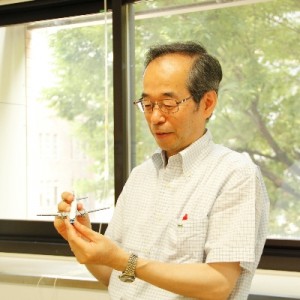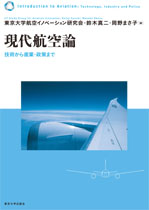Japanese aviation still soaring after a century A trailblazer in the country’s aeronautics, the University of Tokyo continues its pioneering R&D role today
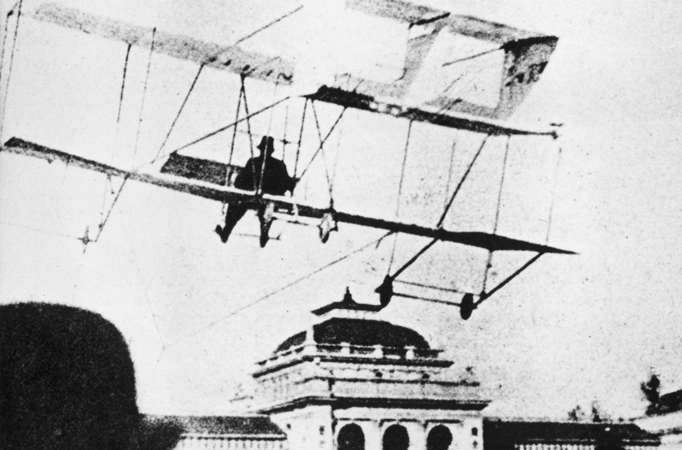
The first fixed-wing aircraft to take to the Japanese skies was a glider, co-developed by a University of Tokyo scientist. In the 100 years since that first flight, the University has remained at the forefront of aviation technology development in Japan. Now it is taking on a new challenge by nurturing the talent that will sustain the next generation of aircraft manufacturing in Japan.
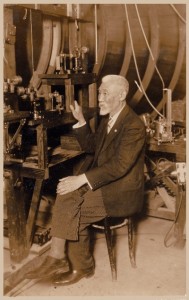
Professor Tanakadate who contributed to the creation of Tokyo Imperial University Aeronautical Research Institute
Credit: Tanakadate Aikitsu Association
On the morning of December 5, 1909, a bamboo-framed and white cloth-covered glider was hauled onto the Daiichi Senior High School’s athletic field, today a part of the University of Tokyo’s Faculty of Agriculture on the Yayoi campus. A large number of students took hold of a rope attached to the glider, and then ran as fast as they could, pulling the glider behind them. Soon, spectators witnessed the craft, with a boy aboard, ascend slowly and fly at a height of 3.6 meters for a distance of some 15 meters before drifting down to a smooth landing. “This was apparently the first, though unofficial, glider flight in Japan, and it represents the very beginning of airplane research in our country,” says Professor Shinji Suzuki of the Department of Aeronautics and Astronautics in the University of Tokyo’s Graduate School of Engineering.
The glider was developed by Yves Le Prieur, a military attaché at the French Embassy in Tokyo, Lieutenant Shiro Aibara of the Japanese Navy, and Professor Aikitsu Tanakadate of Tokyo Imperial University’s School of Science, now the University’s Faculty of Science (at the time the University of Tokyo was named Tokyo Imperial University).
An earlier glider had been designed by Le Prieur based on a drawing from a French pamphlet. But when a test flight failed, Le Prieur turned to his friend Aibara for assistance, and Aibara brought in Tanakadate, an aviation pioneer in his own right, to help with the design.
The team first planned to use an automobile to pull the glider, but on the day of the trial the car broke down and didn’t make it to the test site. Instead they put a small boy aboard and a group of students pulled on the cable attached to the craft.
In the subsequent December 9 test flight, piloted by Le Prieur himself, a car was used, which drove along a street near Shinobazu Pond, Tokyo, towing the glider. This was the first certified fixed-wing aircraft flight in Japan.
“The glider was one of the world’s most sophisticated designs at the time, and had it been fitted with an engine and a propeller, powered flight would have been possible,” says Suzuki. Unfortunately, the chance to install a power source was lost when the Frenchman returned home the following June.
Japan’s first successful powered flight came on December 19, 1910. Kumazo Hino and Yoshitoshi Tokugawa, both Japanese Army lieutenants, were sent to France in April of the same year to train at a French pilot school. On returning to Japan, they piloted a German and a French plane they had purchased in Europe.
Around the same time, retired Japanese Navy engineer Sanji Narahara, who had studied munitions at the Imperial University, built an airframe for himself and on May 5, 1911, made a successful flight with a French-made engine installed. This was only seven and half years after the Wright Brothers made the world’s first powered flight on December 17, 1903.
Tanakadate Sets Up First Aviation Lab
Professor Tanakadate, who started out as a researcher of geomagnetism and earthquakes, became interested in aviation after witnessing the flight of an airship in France in August 1907, while attending a Paris meeting of the General Conference on Weights and Measures. That experience, along with the findings he gleaned from an aerodynamics book he obtained from a British researcher, stimulated his interest in aviation science and set him on course to become one of Japan’s earliest and most important pioneers in the field.
On returning home, Tanakadate built a wind tunnel, the first such device in Japan. His apparatus, created from a nagamochi, a wooden drawer used for storing kimonos, was fed air from one side and had a small glass window in the side through which to observe how a scale-model airplane, hung from the ceiling inside the tunnel, would react to the air flow. He may have used the wind tunnel to test scale models of the first glider to fly in Japan.
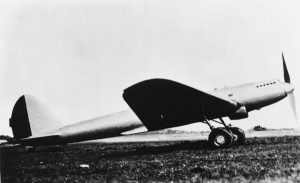
The Kokenki, which set the world closed-circuit distance record in 1938
Photo: Hideo Kitagawa
Credit: Tokorozawa Aviation Museum Collection
Tanakadate frequently emphasized that it was vitally important to fully understand the basics of all related phenomena when it came to aeronautical research. His advocacy for comprehensive learning resulted in the opening in 1918 of Aeronautical Research Institute attached to the University and the commencement of an aeronautical course in the Department of Shipbuilding. This course expanded to become the Department of Aeronautics in 1920. By contrast, it was not until 1926 that the Massachusetts Institute of Technology (MIT) started an undergraduate-level program in aeronautics.
The aviation laboratory immediately became a mecca for Japanese students of aeronautics. Among its foremost achievements was the Kokenki, an experimental long-range monoplane that employed a domestically built airframe and a revamped version of a German engine. The plane flew over the Kanto Plain region, which includes Tokyo and its neighboring prefectures, for 62 hours non-stop after taking off on May 13, 1938. The flight translated into a cruising distance of 10,651.01 km, a world record at the time and still Japan’s only aviation record certified by the International Aeronautical Federation.
In the 1930s, Japan’s aircraft-manufacturing industry, which had depended heavily on imported expertise in its embryonic stage, began to see a flow of original and novel technologies, as demonstrated by the Kokenki. And, as the mainstay of this booming industrial sector, graduates of the Aeronautics Department were responsible for many of these developments. Among the graduates was Jiro Horikoshi, the legendary designer of the Zero Fighter.
“These accomplishments were possible because Tanakadate was always looking ahead to the future, and he established a solid framework for aeronautical research and education,” says Suzuki. “No one would dispute that he is the father of aviation in Japan.”
R&D Resumes after a Seven-Year Hiatus
After surging ahead as a world leader in aeronautical research in the pre-war years, Japan’s aviation industry nosedived when the country surrendered in August 1945, bring WWII to a close. The Supreme Commander for the Allied Powers, in charge of the occupation of Japan, banned all aviation activities and the University’s Aeronautics Department was abolished. The ban was lifted in 1952, when the San Francisco Treaty of Peace with Japan took effect, and the department was reestablished in 1954. As if to symbolize its comeback, it started off with a project to build a passenger aircraft.
The department’s project began with the formation in 1957 of the Transport Aircraft Design Research Association. The association, an incorporated foundation with an office in the University’s Komaba II campus, was responsible for fundamental design work. This was followed by the establishment of the Nihon Aircraft Manufacturing Corporation, a government affiliate, which had the mission of designing, developing and building the YS-11, a propeller-driven, short-take-off (1,200 meters) model seating up to 60 passengers. Many graduates of the Department of Aeronautics, some from the prewar years, joined the YS-11 project. The aircraft achieved great acclaim after its first commercial flight in 1962, and a total of 182 units were produced for delivery to carriers in 12 foreign countries before production ended in 1973.
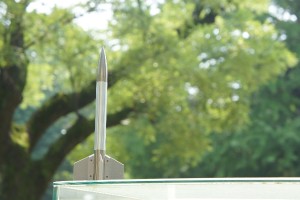
Pencil Rocket (Exhibited in the square in front of Graduate School of Engineering Building 1, The University of Tokyo)
The post-war years saw the age of space development dawn around the world and in Japan. In March 1955, Hideo Itokawa, a professor of the University’s Institute of Industrial Science and previously a member of the war-time team that designed the Hayabusa fighter aircraft, conducted a series of experiments to launch his Pencil rocket for Japan’s space program. The rocket, some 20 centimeters long, was initially launched horizontally, then vertically in later versions.
Itokawa’s efforts were plagued by budget problems, so he opted to begin by building small-sized rockets powered by solid fuels, even using gunpowder at one stage. Over time, these were gradually replaced by larger devices more suitable for practical application. Encouraged by Itokawa’s success, the University set up the Institute of Space and Aeronautical Science (ISAS) in 1964, which went on to successfully launch a Lambda (Λ) rocket carrying Japan’s first domestically built artificial satellite, Ohsumi, in February 1970.
ISAS was reestablished in 1981 as the Institute of Space and Astronautical Science and was opened to all universities in Japan, and in 2003 became the Japan Aerospace Exploration Agency (JAXA). These organizations built on Itokawa’s legacy and continued his pioneering efforts to develop Japanese space research. Today, the University offers a JAXA-sponsored course that promotes cooperation in astronautical science between academia and society through education and by conducting research on sophisticated rocket-engine simulation technology.
An Aviation Business Model for the 21st Century
Learning a lesson from the YS-11’s failure to make significant commercial gains, despite its technical success, the Japanese government chose to tie up with U.S. and European aircraft makers in developing new commercial planes. As a result of this policy change, domestic airplane makers, in and after the 1970s, actively participated in Boeing Corporation’s projects to develop the 767 and 777 passenger jets, and their combined participation share rose steadily to 15% and then 20%. For the 787 project that got underway in the new millennium, Japanese manufacturers’ combined share equaled Boeing’s, at 35%. Japanese companies were even entrusted with main wing development, one area that had always remained in Boeing’s hands, after leading the way in developing and producing carbon-fiber composite materials.

The MRJ (Mitsubishi Regional Jet), which will be Japan's first passenger jet airliner
Credit: Mitsubishi Aircraft Corporation
In 2008 the announcement of the Mitsubishi Regional Jet (MRJ) project came as further good news for Japan’s aviation industry. This is the first domestic-built aircraft project in 50 years, and the first since the YS-11 program. Research and development is being led by Mitsubishi Aircraft Corporation, a Mitsubishi Heavy Industries affiliate. The project aims to make two classes of airframe — a 70- and a 90-seater model — each excelling in operational economy, cabin comfort and environmental compatibility. Already 230 orders have been placed by Japanese, U.S. and Hong Kong carriers and leasing companies, including options and preliminary deals.
Aircraft manufacturing encompasses an array of associated tasks on top of designing, assembling, marketing and user support — among them, maintenance, repair and overhaul work. A half-century after the YS-11 project, Japanese institutions and business models governing such jobs have become significantly outdated, particularly as world standards for air transport have changed dramatically. In view of all this, the University began teaching a special course on aviation innovation in 2009. This course, endowed by Mitsubishi Heavy Industries, aims to become another trailblazer in Japanese aviation research and education.
For the new course, Suzuki and his colleagues recently prepared a text, “Introduction to Aviation — Technology, Policy and Industry,” which Suzuki describes as unique. “You won’t find anything similar being taught anywhere else. It is unique in the sense that in addition to aircraft manufacture and technological matters, government aviation policy is also discussed.” Suzuki’s hope is that the students who complete the course will go on to change the aviation landscape for the better.
Related publications
Masaaki Muraoka, “Koku kotohajime [The Beginning of Japanese Aviation]” Tokyo: Kojinsha, 2003.
Takanori Maema, “Hiko he no chosen [The Challenge of Flight]” Tokyo: Shinchosha, 2010.
Acknowledgement
